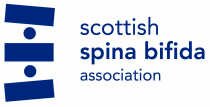 |
 |
 |
|||
| Home | Search | Site Map | Links | Contact Us |
![[Submenu]](images/trirightb.gif) About SSBA About SSBA
|
![[Submenu]](images/trirightb.gif) News for SSBA Users News for SSBA Users
|
![[Submenu]](images/trirightb.gif) The New Family Support Centre The New Family Support Centre
|
![[Submenu]](images/trirightb.gif) Spina Bifida Spina Bifida
|
![[Submenu]](images/trirightb.gif) Hydrocephalus Hydrocephalus
|
![[Submenu]](images/trirightb.gif) Support Available Support Available
|
![[Submenu]](images/trirightb.gif) Questions & Answers Questions & Answers
|
![[Submenu]](images/trirightb.gif) Folic Acid Folic Acid
|
![[Submenu]](images/trirightb.gif) Holidays Holidays
|
![[Submenu]](images/trirightb.gif) Fundraising Fundraising
|
![[Submenu]](images/trirightb.gif) Library Library
|
![[Submenu]](images/trirightb.gif) Current Vacancies Current Vacancies
|
| Feedback |
 Comments Comments |
 |
| Powered By : |
 |
| Hydrocephalus>>Treatment (Continued 3) |
Treatment of Hydrocephalus (Continued)
What Symptoms Should be Looked For?
Possible signs of ACUTE shunt blockage or infection may include: Vomiting, headache, dizziness, photophobia (sensitivity to light) and other visual disturbances, drowsiness and fits. Possible signs of CHRONIC shunt blockage may include: Fatigue, general malaise, visuo-perceptual problems, behavioural changes, decline in academic performance, being just 'not right' from the carerís point of view.
|
|
|
| Copyright 2005 Scottish Spina Bifida Asscoiation - Privacy Policy - Disclaimer |


